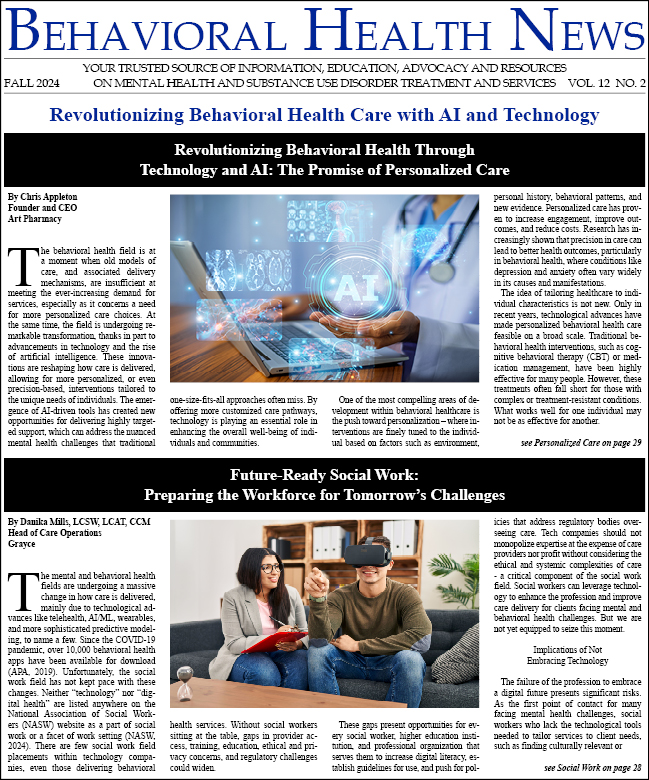-
Project TEACH Integrates Behavioral Health Care into Primary Care for Children and New Mothers
Parents seeking help or information about their child’s emotional or behavioral health often turn first to their pediatrician or their primary care provider (PCP). Unfortunately, family practice doctors often do not have the training needed to make decisions for children with mental health needs,...
-
New Mental Health Parity Laws in New York State
About one in five New Yorkers require behavioral health services, but many do not receive treatment because of a lack of access to insurance coverage. More than 10 years ago, the federal Mental Health Parity and Addiction Equity Act required large group health plans that provide mental health...
-
Reaching Out to Meet the Mental Health Needs of the Aging
There are more than with 3.7 million individuals aged 60 and older in New York State. It’s expected that this number will increase to 4.63 million by 2040. At the same time, the number of older adults with mental illness will increase by 80 percent, to 900,000. Studies have shown that the...
-
Medicaid Redesign Will Help Children and Families Get the Right Services at the Right Time
New York State embarked on a large-scale effort in 2011 to restructure the State’s Medicaid program based on recommendations from the Governor-appointed Medicaid Redesign Team (MRT). The MRT was comprised of a wide variety of stakeholders, including State agencies, providers, advocates, consumers...
-
Responding to the Mental Health Needs of the Aging
Aging is an inevitable part of life. As we get older, we often think of physical problems such an aching back or pain in our knees. But the elderly also have considerable mental health needs, as well. Here at the Office of Mental Health (OMH), we’ve been looking at innovative interventions to...
-
What’s New and Promising from the New York State Office of Mental Health Psychiatric Research Institutes
The NYS Office of Mental Health (OMH) operates two institutes, making our psychiatric research enterprise among the largest in the country. We are proud of the work underway at the institutes, knowing that their continued clinical advances will improve the lives of New Yorkers, as well as people...
-
NYS OMH ACT Teams Utilize Harm Reduction Techniques
Harm Reduction can be a useful tool to help address potentially risky, dangerous, or self-destructive behaviors, including drug addiction, unsafe sexual activities, self-harm, and binge eating. The goal of harm reduction is to make dangerous behaviors safer, and to reduce the level of harmful...
-
Managing Co-Occurring Substance Use and Mental Health Disorders
The combination of substance use disorders and mental illness is a common clinical problem – and a serious public health concern. The problem is widespread. At least one-third of people with anxiety and depression – and between half and two-thirds of people with more serious mental illnesses...
-
Re-Visioning Residential Treatment Facilities in a Managed Care World
It wasn’t long ago that the only options available for intensive treatment of children and youth with severe emotional and behavioral problems were inpatient hospitals or residential care. Before the creation and expansion of community-based mental health services, some children spent many months...
-
Housing and Employment: Cornerstones of Self-Directed Recovery
I recently heard from a New York State supported housing consumer who said, “Starting over with no place to live, no money, food or furniture can be terribly overwhelming. It was then that my counselor introduced me to Saint Joseph’s Medical Center. I found out their Residential Services...




